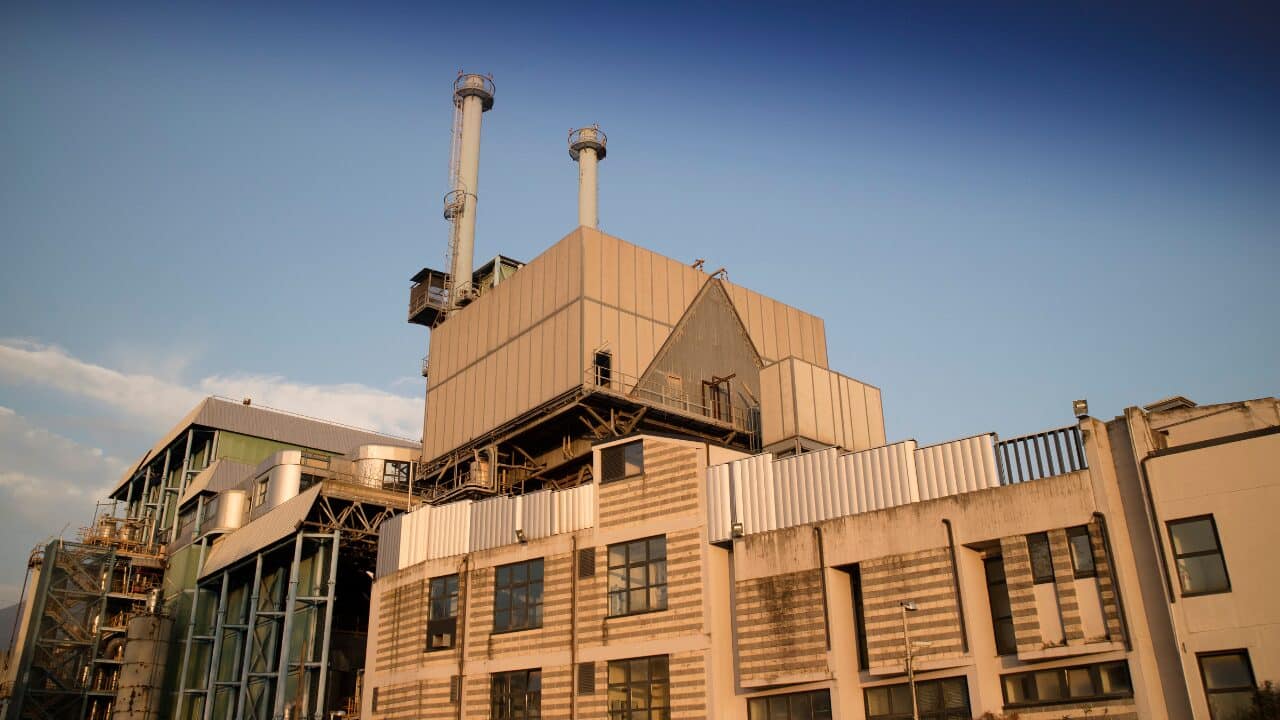Incineration is one of the most controversial waste disposal methods. Supporters promote incineration as an efficient waste-to-energy technology, while opponents argue it has severe negative environmental impacts. In this article, we’ll analyse the key advantages and disadvantages of waste incineration to determine if it should have a place in sustainable waste management.
Waste incineration has become an increasingly relevant issue as global municipal solid waste generation rates continue to rise. With landfill space running out and populations growing, policymakers need to assess different options for managing waste sustainably. Incineration presents benefits like landfill diversion, energy recovery, and waste volume reduction that proponents tout as reasons to expand its deployment. However, environmental groups and zero waste advocates point to substantial pollution risks that significantly undermine any potential upside.
In examining the pros and cons of incinerators, our goal is to provide an objective evidence-based analysis rather than argue any one ideological perspective. There are good-faith arguments on multiple sides of this issue, so it’s important we thoughtfully weigh all the key factors to judge if investments into incineration plants align with principles of social, environmental, and economic sustainability. The more transparent we get about impacts and trade-offs, the better decisions communities can make about managing waste responsibly.
Table of Contents
Outline of Key Questions in Evaluating Waste Incineration
Here are some of the major questions we’ll analyse regarding waste incineration’s advantages and disadvantages:
- How effective is incineration for diverting waste from landfills?
- What are the waste reduction benefits? Does it encourage lower waste generation rates?
- What types of energy can incineration generate? How efficient is energy recovery?
- How does incineration compare to the environmental impacts of landfills?
- What are the air pollution impacts from waste incinerator emissions?
- Do modern incineration plants eliminate pollution risks? What safeguards are in place?
- Does incineration reduce incentives for recycling and composting programs?
- What are the economic costs and public spending requirements for incineration?
- What are views from both supporters and opponents of expanding incineration?
- What evidence and risks should drive decisions on adopting or rejecting incinerators?
Evaluating these questions will provide a 360-degree analysis on if investments into new incineration plants make sense from sustainability, public health, climate change, and ethical perspectives. Getting answers can help shape policies that responsibly address the waste crisis facing communities around the world.
Diverting Waste from Landfills with Incineration
One of the main arguments incineration proponents make is that burning trash can significantly reduce the volumes sent to landfills. With global waste generation on pace to hit 3.4 billion tons by 2050, communities urgently need alternatives to landfilling, which causes pollution and leaks greenhouse gases. Incinerators present a method for diverting waste, extending landfill lifespan, and potentially mining what gets thrown away as an energy resource.
Modern incineration plants can reduce trash volumes by up to 90%, which provides strong diversion potential away from landfills. However, we have to assess if simply shifting waste from one disposal method to another matches principles of sustainable materials management under circular economic models. Incineration competes directly with waste reduction, recycling, and composting programs. Critics argue we should focus efforts higher up the waste hierarchy toward minimising trash generation in the first place rather than burning disposable products after just one use.
While incineration diversion performance sounds impressive on the surface, opponents say we cannot examine it in isolation. The metrics get manipulated through accounting methods that overstate benefits. When assessing how much incineration actually reduces landfill waste, we have to consider what would have happened to those materials in the absence of an incinerator. Critics state a significant portion could get recycled or composted were those programs prioritised instead.
Waste Reduction and Environmental Impact Comparison with Landfills
In determining if incineration delivers real sustainability benefits, we need to analyse potential waste reduction performance along with overall environmental impacts.
In theory, diverting trash away from landfills reduces associated impacts like greenhouse gas emissions from organic wastes decomposition and leachate contaminating soil and groundwater. However, comparing incineration to landfills shows more nuanced results. Modern sanitary landfills deploy methane capture systems and composite liner technologies to contain pollution risks. And the incineration process brings its own negative outputs such as air pollution.
While assessments show landfill methane generates more greenhouse gas emissions than incinerator carbon dioxide outputs per ton of waste disposal, incineration facilities produce heavier loads of localised air and solid waste pollutants. These outputs take the form of toxic bottom and fly ash residual deposits along with acid gases, dioxins, and heavy metal particulate matter emissions. Opponents argue such contamination causes public health issues and environmental injustice when incinerators get built in marginalised communities.
For waste reduction impacts, incineration requires continuously feeding more trash into burners to keep generating energy. Built facilities create 30-40 year supply obligations, which critics say incentivizes expanding waste generation instead of materials conservation programs higher up in the hierarchy. Without robust recycling and composting rates above 50%, communities struggle to meet incinerator minimum waste flow requirements over decades-long contracts. Some accuse private developers of deliberately suppressing recycling to protect their burner supply.
While assessments present a mixed picture in comparing incineration to landfilling, the core question focuses on if it fits into sustainable waste management aligned with circular economy principles. From this perspective, critics argue waste incineration discourages lower waste generation rates overall and hinders recycling and composting programs when prioritised for diversion investment over initiatives further up the waste hierarchy.
Incineration for Energy Recovery
Waste incineration facilities generate electricity and heat from burning trash. Proponents tout the ability to recover embodied energy in discarded materials rather than wasting such calories in landfills. They market incinerators as waste-to-energy plants that mine trash as a sustainable fuel source.
The energy potential from solid waste does provide upside. Organic materials contain enough intrinsic energy to offset fossil fuel inputs for ignition. As a result, assessments credit incinerator electricity as a partly renewable energy stream that substitutes dirty power plants across interconnected utility grids. Total global generation exceeds 550 terawatt hours annually from burning over 270 million tons of waste in over 2,200 incinerators.
However, critics argue incinerators fail to meet high efficiency standards for legitimate renewable energy and waste-to-energy categorization. By falling short of European Union benchmarks of 50% to 60+% efficiencies, assessments label waste incinerators as recovery rather than renewable processes. Overall generation requires continuously expanding trash inputs rather than sustaining energy outputs from reusable fuel stocks. And unlike solar, wind, geothermal, and legitimately renewable biomass energy, incinerators provide intermittent power supply subject to spikes, disruptions, and shut downs.
In terms of sustainability, perhaps the bigger question focuses on if mining trash for its energy aligns with principles of ethical resource management. Much of what gets burned in incinerators encompasses single-use plastic and cardboard packaging along with other recyclable and compostable materials. Should we consider expendable products discarded after one use as renewable fuel? Or does burning recoverable recyclables and compostables represent an unsustainable waste of resources?
Air Pollution Impacts from Incinerator Emissions
The largest environmental threats from incineration come from air pollution emissions exhausted from waste burners. Both older outdated plants and new facilities classified as “clean incinerators” release toxic outputs linked to public health damages. Assessments correlate localised incinerator particulate, acid gas, and heavy metal emissions with increased infant mortality along with higher rates of heart disease, respiratory illness, diabetes, cancer, and neurodevelopmental issues. Nearby communities disproportionately bear these health burdens.
While pollution control technologies in newer incinerators help limit some emissions compared to older plants, all operational waste burners release toxins at levels high enough to pose health hazards. Negative outputs encompass particulate matter, sulphur dioxide, nitrogen oxides, trace dioxins and furans, volatile metals (mercury, cadmium, thallium, etc.), acid gases like hydrogen chloride, and uncombusted organic compounds such as polycyclic aromatic hydrocarbons (PAHs). These pollutants contribute to cumulative exposure limits exceeded in many areas, creating environmental injustice for marginalised groups.
Bottom and fly ash residual deposits from incinerators also raise contamination issues. Classification as hazardous or special waste restricts disposal options as leachates contain high concentrates of lead, copper, nickel, zinc, cadmium, mercury, arsenic, and chloride salts. Stockpiling ash requires permanent isolation while attempts at reuse in cement manufacturing still leach toxic metals.
With peer-reviewed life cycle assessments showing higher incinerator pollution emissions than modern landfills on toxicity and ecotoxicity metrics, arguments promoting waste incineration as a cleaner option appear dubious. Burning discarded resources rather than sustainably cycling materials through recovery systems seems misaligned from both environmental and ethical perspectives around responsible resource management.
Do Modern Incinerators Eliminate Risks with Improved Technology?
Proponents argue new generations of incinerators deploy sophisticated pollution controls that limit toxicity risks from burning waste. By upgrading emission scrubbing and filtration systems along with automation technology, they promote modern plants as “clean incineration” facilities with near zero pollution outputs.
However, emissions data for both new and upgraded incinerators show toxic particulate, acid gas, and heavy metal pollution levels high enough to violate air quality standards and trigger public health impacts. Predictive models demonstrate that increasing combustion temperatures and enhancing pollution capture rates to reduce one set of toxins leads to exponentially higher formation rates of other damaging compounds like dioxins and furans. Even minute traces of these bioaccumulative emissions accumulate in soil and water systems as they move up the food chain.
The concept of “clean incineration” also distracts from the core issue around aligning waste disposal practices with responsible materials management principles. Promoting maximum trash burn rates to generate energy seems incongruent with sustainability values prioritising waste reduction and resource conservation. Continuously expanding incinerator capacities institutionalise a linear economic model dependent on perpetually increasing waste generation. Even if we minimise air emissions, burning recoverable materials after one use rather than cycling them through recovery systems raises ethical questions around wasting finite natural resources.
While seeking incremental risk reductions makes sense for existing incinerator operations until facilities get phased out at contract expirations, clean incineration arguments should not provide justification for building new plants. From health, climate and sustainability perspectives, eliminating waste at the source aligns much stronger with both environmental ethics and responsibility toward future generations.
Do Incinerators Undermine Recycling and Composting Programs?
One concern around prioritising incineration as a waste diversion method focuses on if it hinders the expansion of recycling and composting rates in communities. Critics argue incinerators directly compete over the same waste streams and undermine efforts to move disposal practices higher up on the waste management hierarchy toward zero waste models.
Incinerator financing relies on securing guaranteed waste supplies over 30 to 40 year periods. This creates incentive structures for facility operators to protect their trash feedstock. Some accusations point to deliberate efforts by private incinerator companies to suppress recycling rates once their burners get built so communities stay contractually obliged to keep feeding waste supplies.
At current global recycling levels hovering around 20%, enough trash remains freely available to enable incinerator expansion for decades without immediately threatening recycling programs. However, critics argue taking long-term planning horizons toward zero waste into account requires avoiding further incineration investments so recycling and composting efforts can scale toward 80-90%+ rates to prevent reusable discards getting burned up. As communities approach ubiquitous recycling and composting adoption, overbuilt incinerator capacities would threaten progress by necessitating waste generation rates stay perpetually high.
For cities on trajectories toward zero waste like San Francisco, maintaining simultaneous high recycling rates and expanding incineration requires increasing overall trash generation levels to feed both streams. This counteracts the core principle around waste reduction. To critics, either recycling rates or incinerator burn rates would fall as communities approach closed loop cycles. Case studies show incinerators do correspond strongly with reduced or stalled recycling rates in comparative cities at similar development levels. Opponents argue incineration investments directly undermine expanding adoption of recycling and composting programs before societies can enact adequate transitions toward circular models.
Economic Costs and Public Spending on Incinerators
Evaluating the pros and cons of incinerators also requires examining the significant economic costs involved with constructing, operating, and maintaining waste burners over multiple decades. As intensive large-scale industrial facilities, incinerators require substantial upfront financing and long-term public spending commitments above cheaper landfill disposal options.
The high expense associated with incinerators also drives incentive structures that deter shifts toward zero waste and circular economic models. The huge sunken infrastructure investments in building incinerators pressure municipalities to sign 30-40 year waste flow guarantees with private developers. These agreements penalise communities that enact successful recycling initiatives and composting adoption at scale. Without perpetually increasing trash generation rates to feed overcapacities even as recycling rises, municipalities face contractual non-compliance penalties.
Critics also accuse incineration companies of deliberately oversizing proposed plants on initial development applications. By inflating burn rate capacities far beyond actual municipal waste projections, developers anchor inflated minimum waste supply guarantees beneficial to their financing models but detrimental to sustainability planning. Oversize capacities combined with predominantly private ownership structures also threaten to convert well-intentioned public waste authorities into trash supply guarantors rather than incineration infrastructure stewards. These factors drive economic cycles misaligned with waste reduction goals.
When assessing costs, analysts also need to account for health and carbon impacts getting externalised onto communities along with liabilities associated with toxic residual ash storage. Once considered, cumulative expenditures make incineration one of the most expensive waste disposal options over the full life cycle. While upfront capital financing requirements often get ignored by decision-makers, leaving these massive long-term costs for future generations raises intergenerational ethical issues around responsible planning.
Perspectives from Incineration Supporters and Opponents
Incineration remains one of the most polarising waste management options, which makes transparently laying out arguments from supporters and opponents essential for objective analysis. We’ll summarise high level views from both sides concerning the key factors and evidence communities should consider around incineration.
Incineration Supporters
Proponents argue that modern incinerators operate cleanly and make waste disposal safer compared to landfilling. Any pollution risks can get mitigated through technological improvements while waste-to-energy delivery provides renewable benefits. Incineration reduces volume effectively to extend landfill lifespan. It also recovers valuable energy from trash rather than wasting embedded calories. They promote incineration as economically advantageous and see no evidence it materially displaces recycling and composting. Supporters consider incineration a legitimate sustainable option as part of an integrated plan.
Incineration Opponents
Critics argue toxins emitted from incinerator stacks along with residual ash still pose threats to public and environmental health while burning discards undermines principles of ethical resource management. They want moratoriums on new construction and existing plant phase outs at contract expirations until we approach zero waste economic models aligned with circularity. Supporters focus too narrowly on incremental emissions reductions rather than the paradigmatic shift society needs around responsible materials use. Even “clean” incineration still wastes scarce natural resources and discourages recycling and composting efforts critical for sustainability.
Key Evidence to Guide Incineration Policy
Determining sound policies requires assessing evidence from incineration impacts along with exploring alternative options focused higher up the waste management hierarchy. Supporters emphasise technical arguments around optimising disposal efficiency and pollution control rates while critics argue for system-level sustainability transformations. There are good-faith debates with valid concerns on both sides.
Going forward, the decision making framework around managing community waste must align recommendations with larger decarbonization and sustainable materials management efforts. Prioritising waste reduction, recycling and composting expansion, along with exploring zero waste economic models provides the direction to reconcile many issues raised from various sides. There are still complex trade-offs communities must navigate, but centering decisions on core principles around sustainability, ethics and responsible resource stewardship for current and future generations seems the wisest path forward.
Key Takeaways on Incinerator Pros and Cons
Evaluating the many complex issues around waste incineration leaves decision-makers with difficult choices riddled with trade-offs. But focusing policy recommendations on principles of sustainability, sound resource management, public health protections along with economic responsibility offers guidance.
Here are key takeaways for communities assessing incineration proposals:
- Incinerators present major pollution threats that undermine environmental and public health goals even with modern technological controls
- Burning discarded recoverable materials opposes core principles around responsible resource stewardship and ethical waste management
- Overcapacity risks and long contractual obligations deter waste reduction and recycling/composting expansion critical for sustainability
- Substantial economic costs often get excluded from assessments supporting incinerator expansion
- Alternative approaches exist by prioritising waste reduction, reuse, recycling, composting and other methods higher up on the waste management hierarchy
While assessments show incineration delivers marginal near-term disposal benefits, significant negative impacts appear likely over long-term planning horizons critical for true sustainability. This analysis aims to transparently present both supporter arguments and opponent concerns so communities can judge appropriate evidence-based policies around managing discarded resources responsibly. There are still difficult trade-offs society must navigate, but centering decisions on core principles provides the soundest path forward.





